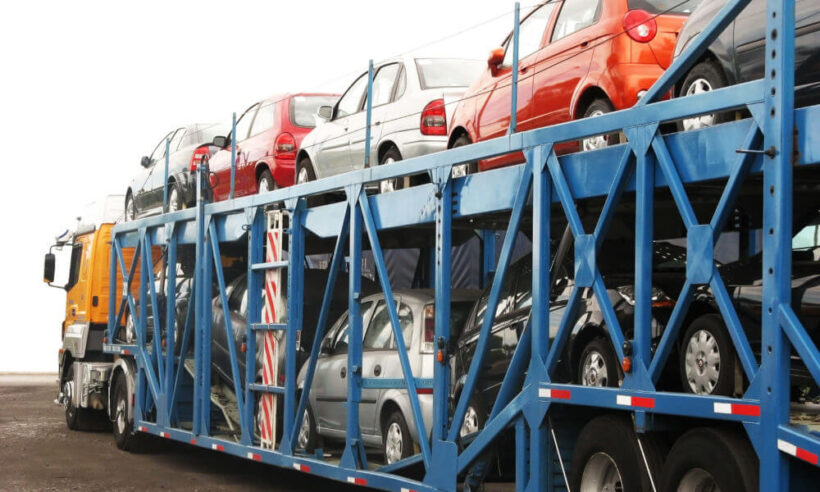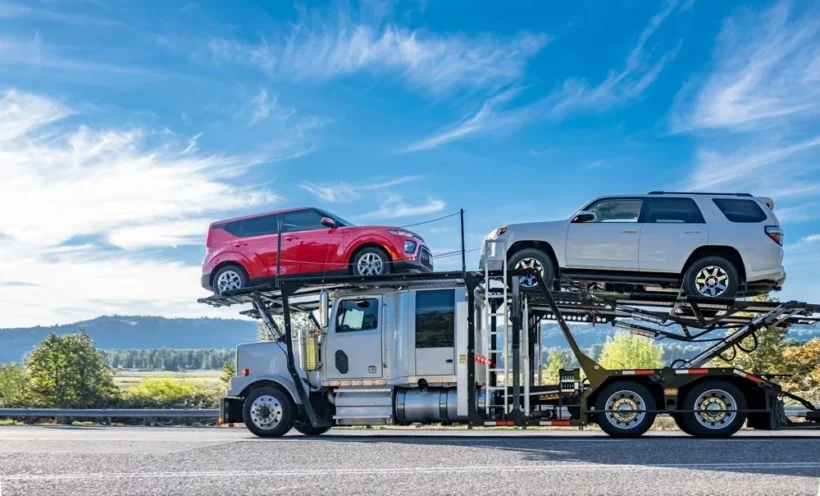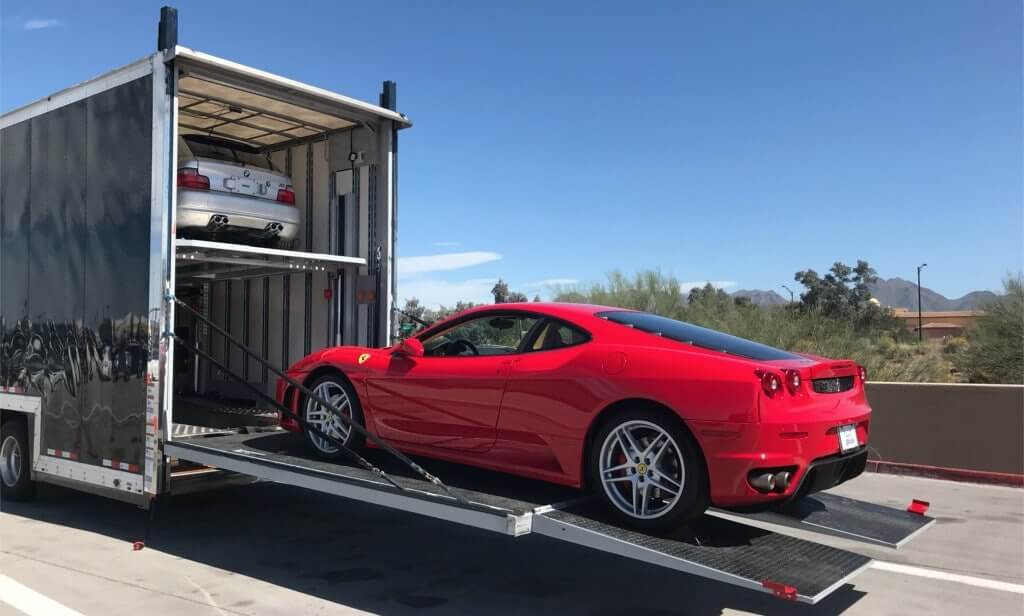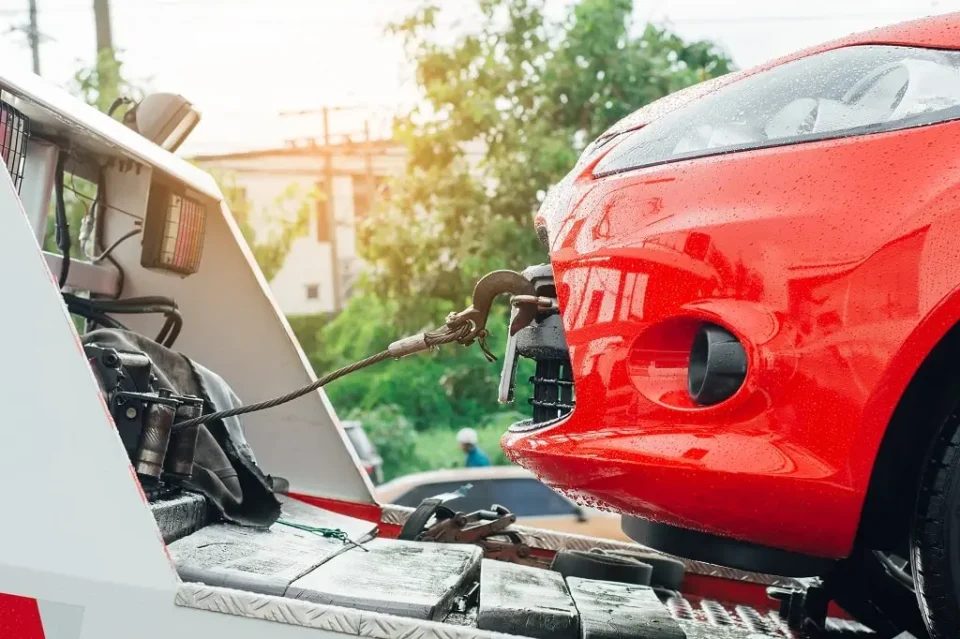The open road beckons, but a relocation across state lines can bring the unexpected challenge of transporting your vehicle. While “state-to-state car towing” might sound straightforward, navigating this process can feel like solving a complex puzzle. Worry not, for a smooth and stress-free experience lies within your grasp.
Navigating a state-to-state move is a significant undertaking that extends beyond the relocation of personal effects to include the detailed planning and execution required for transporting vehicles. Whether it’s a cherished classic car, a family SUV, a sleek motorcycle, or larger items like boats, RVs, or heavy equipment, the logistics of moving these assets safely and efficiently can seem daunting. This guide delves deeper into the nuances of vehicle transport across state lines, offering expert advice and strategies to ensure a smooth transition for all types of vehicles.
Leveraging Resources for a Stress-Free Move

For those planning a state-to-state vehicle move, resources like this comprehensive state-to-state towing guide are invaluable. These resources offer detailed insights, tips, and considerations that can ease the complexity of vehicle transport, allowing for a more informed and confident approach to your move.
Comprehensive Planning for Vehicle Transport
Understanding Your Transport Needs
The first step in a successful vehicle move is a thorough assessment of your transport needs. Different vehicles require different handling and care. For example, luxury vehicles and classic cars may necessitate enclosed transport options to shield them from the elements, while larger vehicles like boats and RVs require specialized carriers with the experience and equipment to manage their size and requirements.
Selecting the Right Transport Service
A critical component of your move involves choosing a transport service that aligns with your specific needs, budget, and timeline. Here are key considerations to guide your selection process:
- Specialization: Look for carriers with expertise in your type of vehicle. Specialized transport services are more likely to understand and cater to the unique requirements of your vehicle, ensuring its safety and integrity during the move.
- Reputation and Reviews: Investigate the carrier’s reputation in the industry through online reviews, testimonials, and potentially, industry awards. A strong track record of satisfied customers is a good indicator of reliability and quality service.
- Regulatory Considerations and Compliance: Interstate vehicle transport falls under the jurisdiction of multiple regulatory bodies, including the Department of Transportation (DOT) and the Federal Motor Carrier Safety Administration (FMCSA). Ensuring that your chosen carrier is compliant with these regulations is vital for legal and safety reasons. This includes verifying the carrier’s DOT and MC (motor carrier) numbers, which indicate they are legally registered to operate.
- Insurance and Liability: Confirm that the carrier offers comprehensive insurance coverage for your vehicle during transport. Understanding the extent of their coverage and any deductibles is essential for your peace of mind.
- Customizable Service Options: Whether you need door-to-door delivery, express shipping, or have specific scheduling requirements, the ability to customize the service to fit your move is crucial.
Navigating Pricing and Contracts
Understanding Your Quote

Vehicle transport quotes can vary widely based on factors such as the distance of the move, the type of vehicle, and the level of service required (e.g., open vs. enclosed transport). It’s important to understand what is included in your quote and to ask about any potential additional fees, such as for expedited service, insurance upgrades, or remote delivery locations.
Reading the Fine Print
Before agreeing to any service, thoroughly review the contract or agreement. Pay special attention to cancellation policies, insurance coverage details, and the procedure for handling disputes or claims. Knowing your rights and responsibilities can prevent misunderstandings and ensure a smoother resolution should any issues arise.
Enhancing the Vehicle Transport Experience
Seamless Communication and Tracking
Opt for a transport service that values communication, offering consistent updates and tracking options to keep you informed of your vehicle’s status throughout the journey. This transparency is vital for peace of mind and planning.
Preparing Your Vehicle for Transport

Proper preparation can significantly impact the success of your vehicle’s transport. Steps include:
- Documentation: Ensure all necessary paperwork, such as registration, insurance documents, and any required permits, are in order and accessible.
- Physical Preparation: Clean your vehicle thoroughly inside and out. A clean vehicle makes it easier to identify any potential damage that occurs during transport. Additionally, take photos of your vehicle from various angles to document its condition pre-transport.
- Personal Belongings and Security: It’s crucial to remove all personal belongings from your vehicle before transport. Not only does this reduce the risk of theft or loss, but it also ensures compliance with transport regulations, as carriers are not licensed to transport household goods. Additionally, disabling any alarm systems and securing or removing loose parts or specialty items, such as spoilers, antennas, and fog lights, can prevent damage during the transport process.
- Fuel and Fluids: Reducing your vehicle’s fuel level to about a quarter of the tank can save weight and decrease the risk of leaks during transport. It’s also wise to check for and address any leaks of fluids from your vehicle, as these could pose a hazard during the move.
- Mechanical Check: Perform a basic mechanical check of your vehicle, including fluid levels, battery charge, and tire pressures. This is particularly important for ensuring that your vehicle can be loaded and unloaded without issues.
Final Steps and Post-Transport Inspection
Upon the arrival of your vehicle at its destination, a careful inspection is paramount to ensure it has been delivered in the condition expected. Compare the vehicle’s condition to the photographs taken before transport. Any discrepancies or damages should be noted and reported to the transport service immediately to address any claims.
Conclusion
A successful vehicle transport requires a strategic approach, encompassing thorough research, meticulous planning, and proactive communication. By understanding the nuances of interstate vehicle transport, selecting a carrier that meets your specific needs, and preparing your vehicle for the journey, you can mitigate risks and ensure a seamless move. Remember, the goal is not just to move your vehicle from point A to point B, but to do so in a manner that is safe, efficient, and aligned with your overall moving strategy. With the right preparation and resources, navigating the intricacies of state-to-state vehicle transport becomes an achievable and stress-free endeavor.

